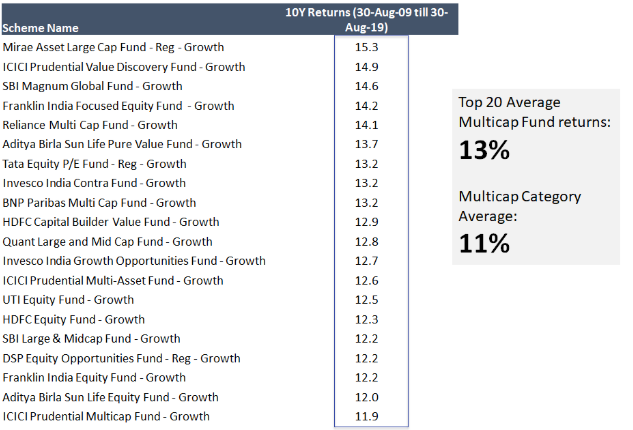Investment researchers across the world, have found out that a group of stocks with certain specific characteristics reward investors more than the popular market cap based benchmarks (such as Nifty 50). These characteristics are called factors.
Till date, a total of 6 factors have been identified, which have proven to be persistent and have worked across different equity markets.
- Value
- Quality
- Small and Midcap
- Momentum
- Dividend Yield
- Low Volatility
The factors of Value, Quality, and Small and Midcap have been used by Indian Fund Managers in the Mutual Fund space. Given that India is a growth market, Dividend Yield hasn’t worked well in India. Momentum factor while it works well theoretically, but given its high turnover, is practically difficult to execute it on a larger scale. This leaves us with the sixth factor – low volatility.
Low Volatility is a factor that has worked really well across the globe and India, both in terms of lower risk and consistent returns.
FI Stable Growth 25
Our new product, the FI Stable Growth 25 is a systematic, rule-based equity portfolio based on the low volatility factor.
The low volatility style or factor usually performs in line with or slightly better during market upsides. However, during times of market declines, this style provides significant outperformance. This leads to long-term outperformance across a market cycle.
While this strategy is popular across the other major global markets, it is still a relatively new concept to Indian investors.
Tie up with MSCI
Now, to construct a portfolio based on the low volatility style of investing, we have tied up with an US firm, Morgan Stanley Capital International, commonly referred to as, MSCI. MSCI is the leading global provider of equity indexes that underlie many popular ETFs. They have been constructing global indices since 1969.
They work with close to 7000 clients in 90 countries and most of the top global money managers use MSCI’s indices. Around two-thirds of the global equity ETF assets, which run the low volatility strategies, are based on the MSCI indices.
Portfolio Construction
The FI Stable Growth 25 portfolio is based on a global low volatility algorithm called MSCI Risk-weighted Methodology. We have worked closely along with MSCI and have customized the algorithm to suit Indian investors.
The risk-weighted methodology chooses 25 stocks with the lowest volatility from the base MSCI India domestic index, which covers 350+ stocks. The volatility is measured as the weekly variance of stock prices taken over the last 3 years. The stocks are weighted based on their volatility with higher weights given to the lowest volatility stocks. Also from a risk management perspective, we have capped the maximum stock exposure to 10% of the portfolio.
This particular methodology of constructing low volatility portfolios has worked well both in terms of returns and risk in the Indian context as well.
Consistent Returns
The MSCI Risk Weighted index is available from May 2008. The 11-year period captures the majority of the 2008 fall, 2011 fall, 2013 fall, 2016 fall, etc., and similarly captures sharp market rally periods such as 2009-10, 2014, and 2017. This we believe is a decent enough period to test the long-term effectiveness of the strategy across various market conditions.

The model has comfortably beaten both the NIFTY 50 and Nifty 500 index since inception and also over the last ten years by around 6.5%. Since inception, it gave around 16% vs 9% for both Nifty 500 and Nifty 50. In the last 10 years, it gave around 17% vs 10% for both Nifty 500 and Nifty 50.

It has also outperformed all the other equity multicap mutual funds.
Has the performance been consistent or is it concentrated across a few periods?
We ran the returns for each and every 5 year period possible in the last 11 years. We found that
99% of the times, the model had provided returns above 12%, and
81% of the times, it had provided returns above 15%.
The lowest 5-year return was 11%.
Further on a 5-year basis, 95% of the times, the portfolio also outperformed Nifty 50 TRI by more than 4% and Nifty 500 TRI by more than 3%.
The model as seen above has provided long-term consistent outperformance.
What about the risks?

Coming to the risks, the model has had far lower declines and has outperformed the markets significantly during periods of market declines.
Historically it tends to capture only around approximately 61% of the downsides of Nifty 50 measures using another metric called downside capture ratio.
Similar to what was witnessed in the global markets, this particular investment style of low volatility as seen from the backtests has provided better returns at lower risk even from an Indian context.
Summing it up
At FundsIndia, the endeavour is to provide our investors access to different investment styles, which have been proven to provide consistent outperformance across different countries and over long periods of time.
While we have been recommending the value, quality, and small/midcap styles to our investors through our existing mutual funds, we believe the new low volatility style of investing via FI Stable Growth 25 can be a good addition to your portfolio going forward, especially from a style diversification perspective.
For investors with a 5-year plus time frame and wanting to build a defensive equity strategy, the FI Stable Growth 25 Portfolio can be a great option to take exposure to the “low volatility” investment style.
From a portfolio diversification point of view and risk management perspective, we suggest capping the overall allocation to less than 25% of the overall portfolio.
Click here to know more about the product.









hi,
Kindly advise